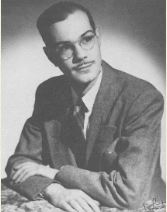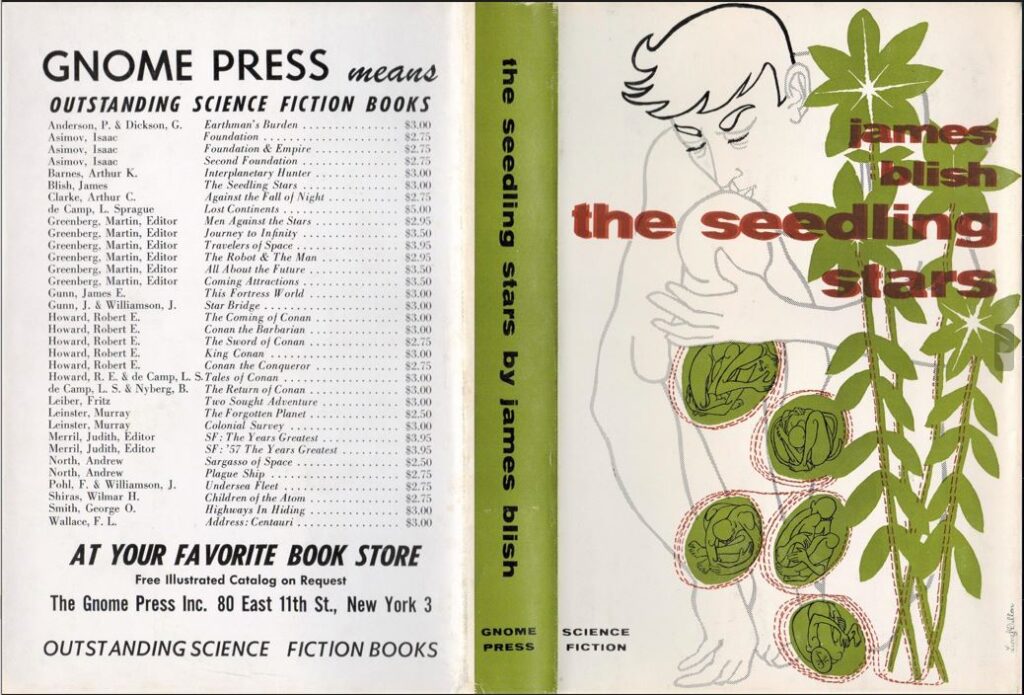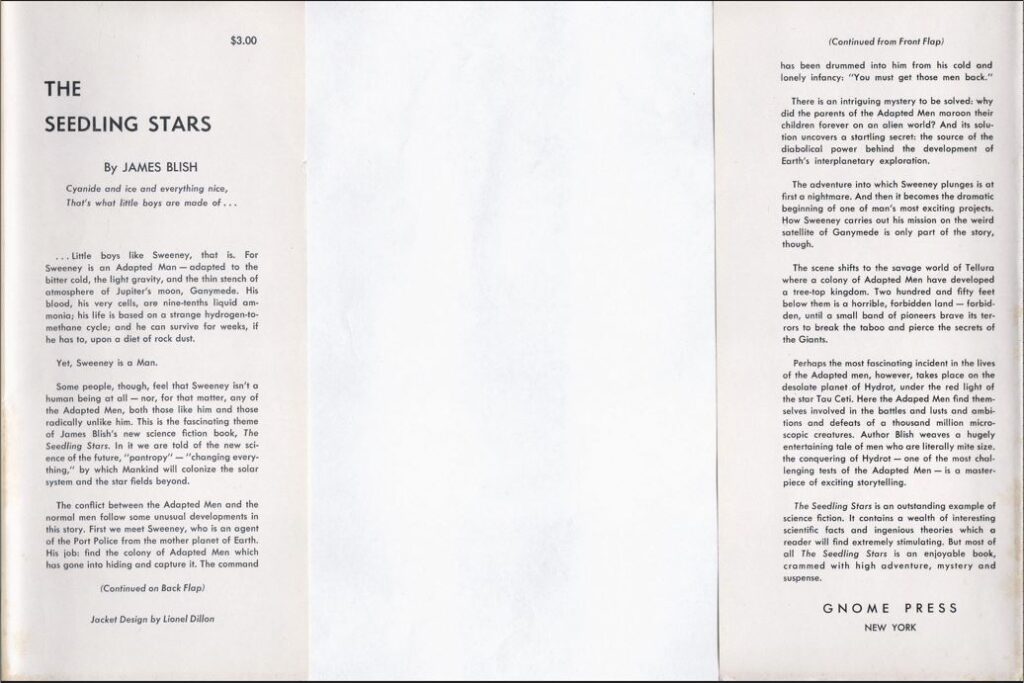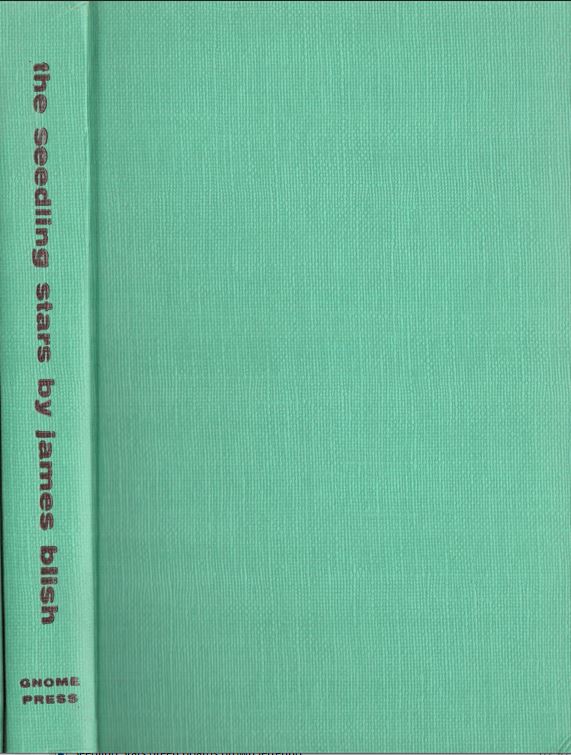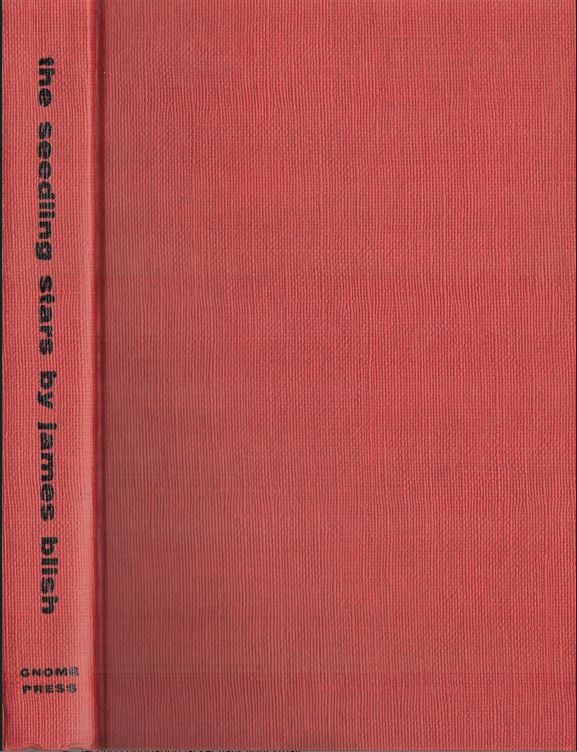Comments
James Blish (1921-1975) is usually included in the 1950s generation of SF writers, but only because he didn’t have the explosive starts of many of the others. As a member of the Futurian crowd of New York teenagers panting to break into the field, in 1940 the nineteen-year-old Blish sold two stories to fellow prodigy Frederik Pohl who was a veteran editor of two magazines despite being only 20. Sell is something of a misnomer; Pohl’s magazines were fourth-rank and he accepted everything his pals submitted, sometimes for free. Blish would marry Virginia Kidd, future Futurian and Judith Merril’s roommate, in 1947.
Blish continued to sell to low-prestige publications until he broke out with two major stories for Astounding in the early 1950s. “Okie” started the long-running Cities in Flight series, using the audacious notion of anti-gravity powering entire Earth cities to roam the stars. “Surface Tension” appeared in 1952, later chosen for the Science Fiction Hall of Fame anthology voted on by members of what was then called the Science Fiction Writers of America. That story, based on a pseudonymous story written a decade earlier, would become the core of The Seedling Stars, a series of stories based on the notion of pantropy, that adapting humans for alien planets would be easier and quicker than terraforming would be.
At about the same time, he began reviewing fiction for a variety of fanzines and a few professional magazines. He and Damon Knight were the first authors to apply true critical standards to science fiction, making themselves often unloved in the process. Oddly, he didn’t review a single Gnome Press book. He won the Hugo Award for his novel, A Case of Conscience, in 1959.
Gnome Notes
A half dozen of Gnome’s 1957 books wound up with a 1959 reprinting in gray cloth. Two, Earthman’s Burden and Two Sought Adventure, also have an unrecorded binding in red boards which is most likely a later printing. Since there’s no known priority or print date for the red boards variant here, I would normally assume that it too is a later printing from the same session. However, both CURREY and CHALKER consider it one of the three 1957 variants. The find of black boards, therefore, is confounding. It’s likely also from 1959 as was the gray cloth variant, but should the red boards be listed as 1957 or 1959? That a new binding was necessary is shown by the book disappearing off back panels as early as The Path of Unreason, published in mid-1959. Since I vary from earlier listings only when the evidence compels me, I’m leaving the red boards in 1957. The evidence does compel me to call CURREY wrong in one way. Although he calls the spine lettering black for both the green and red boards, holding them together under a good light clearly reveals that brown ink was used on the green boards.
Kirkus Reviews gave the expected publication date as March 15, 1957.
Reviews
Robert Silverberg, Infinity Science Fiction, August 1958
This is real science fiction: the unadulterated article, stimulating and thoughtful. James Blish makes more solid his claim to the top level of the field.
Damon Knight, Infinity Science Fiction, November 1957
[F]ive loosely connected stories about ‘pantropy” and the human seedling program – uneven in literary quality, but notable for their brilliance of ideas.
Contents and original publications
• Book One: “Seedling Program” (Fantasy & Science Fiction, February, 1956 as “A Time to Survive”).
• Book Two: “The Thing in the Attic” (If, July, 1954).
• Book Three: “Surface Tension” (adapted from “Sunken Universe,” Super Science Stories, May, 1942 as by Arthur Merlyn) and from “Surface Tension”, Galaxy, August, 1952).
• Book Four: “Watershed” (If, May, 1955).
Bibliographic information
The Seedling Stars, by James Blish, 1957, copyright registration 1Apr57, Library of Congress Catalog Card Number 57-7109, title #60, back panel #33, 185 pages, $3.00. 5000 copies printed 1957, later printing or binding 1959. Hardback. Jacket design by Lionel Dillon. “First Edition” stated on copyright page. Manufactured in the U.S.A. by H. Wolff, New York. Back cover: 34 titles. Gnome Press address given as 80 East 11th St., New York 3.
Variants, 1) through 3) no known priority in 1957; 4) and 5) probably 1959 but no known priority
1) (CURREY A) Green boards, spine lettered in brown. [CURREY states lettering is black].
2) (CURREY B) Red boards, spine lettered in black.
3) (CURREY C) Gray boards, spine lettered in red.
4) (CURREY D) Gray cloth, spine lettered in red, known later state.
5) Black boards, spine lettered in red. [Not in CURREY]
Images

